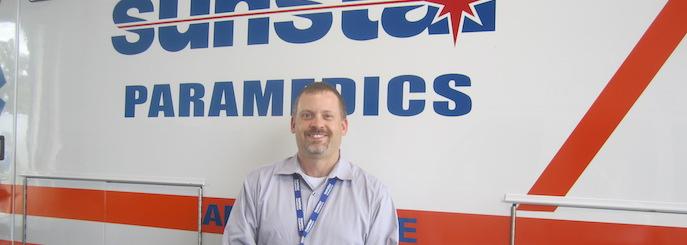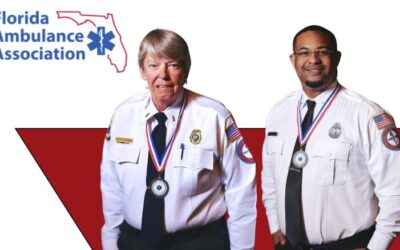Sunstar Paramedics EMTs and paramedics are prepared with the knowledge, compassion and quick-thinking skills to care for patients facing any emergency situation. And their ambulances are fully stocked to support them in providing the best patient care possible.
Each Sunstar ambulance has hundreds of medical supplies, equipment and medicines on board to help EMTs and paramedics care for patients. Every ambulance is stocked with the same supplies on each shift, each in a precise position. The uniformity helps the emergency response crews find specific supplies quickly – even if they’re working in a different ambulance – which helps them provide faster medical attention.
John Peterson, Sunstar’s director of logistics, and his team of 37 employees ensure each ambulance is fully stocked before every shift.
“Many EMS providers rely on paramedics and EMTs to restock the ambulance, but they can miss or forget supplies after a long shift,” said Peterson. “Sunstar’s process allows vehicle supply technicians to quickly and accurately restock each ambulance and ensure Sunstar’s paramedics and EMTs have the supplies necessary to care for patents every time.”
Vehicle supply technicians (VST) use Sunstar’s unique speed loader process to restock each ambulance at the end of a shift. Speed loaders are located in each ambulance and have medical supplies stored in color-coded, sealed plastic bins. Each color corresponds with a specific type of procedure. For example, all pediatric equipment is stored in yellow bins. Sealed bags containing all necessary supplies for a specific procedures, like IV supplies and oxygen masks, are located inside the bin.
The bins are placed in cabinets on the ambulance, which have a plastic seal. This method allows VSTs to quickly see which seals have been broken – meaning the EMS crew had to open the cabinets during a shift to access medical supplies – to help determine what needs to be restocked. This process reduces the chance of errors and limits restocking time to 15 minutes per ambulance.
VSTs are responsible for deep-cleaning each ambulance at least once a month. After removing all of the supplies and equipment, the VSTs clean the ambulance from top to bottom. Each piece of equipment is checked to make sure it works properly before placing it back on the ambulance.
Each crew has the opportunity to fill out ambulance comment cards to provide Peterson with feedback about the ambulance’s inventory and cleanliness. This process helps Peterson monitor ongoing discrepancies in stocking or cleaning, and effectively resolve any issues.
In addition to stocking Sunstar’s ambulance fleet, Peterson and his team are responsible for purchasing more than $2.5 million annually in medical supplies and equipment for Sunstar and 18 Pinellas County fire departments. Approximately 150,000 individual items are stocked in the warehouse at any given time.
Five employees within the logistics department manage the warehouse’s contents, accounts payable and controlled substance distribution. They track warehouse inventory, make daily supply deliveries to the Pinellas County fire departments and oversee one of the country’s most efficient ambulance-stocking systems.
Each crew checks out radios, computer tablets, ambulance keys and other large assets from the materials department at the start of each shift. With this system, the warehouse can track where the assets are assigned and find them if they are not returned on time.
The team audits part of the warehouse every day to help track supplies, and complete a full inventory count every two and a half weeks.
“Keeping an accurate inventory helps us keep unnecessary costs down,” said Peterson. “If we have too few or too many of a particular item, I can immediately address the issue and make any necessary adjustments.”
Peterson also minimizes costs by purchasing supplies through FirstChoice Cooperative, a group purchasing organization. Sunstar purchases supplies at a discounted rate, and in turn, passes those savings to Pinellas County and municipal fire departments.
Sunstar’s processes have gained national attention and Peterson has helped EMS providers around the country to streamline their stocking and inventory processes. But he continues to search for ways to improve efficiency.
“I am always on the lookout for a new software or systems that can improve our current process,” said Peterson. “Our team is constantly brainstorming ways to increase quality control or researching new way to make the re-stocking process faster without sacrificing quality.”



